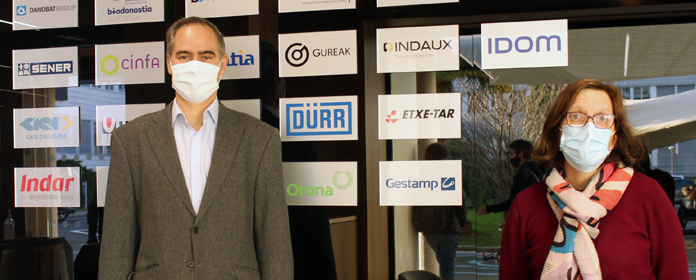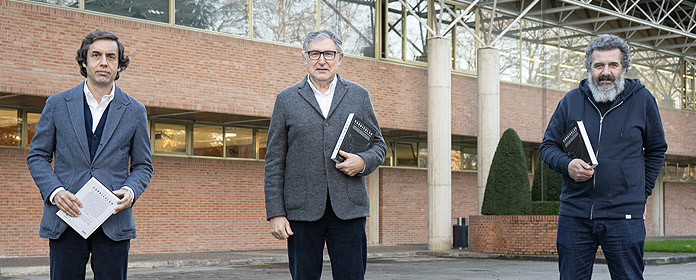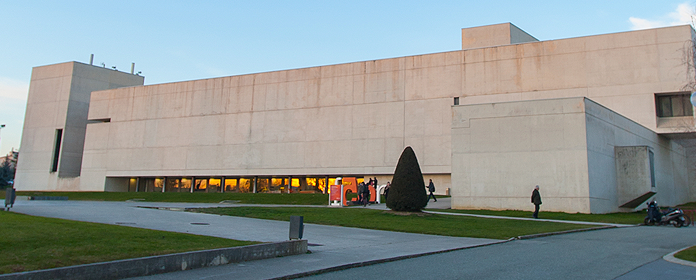A series of articles from Institute for Culture and Society explores new angles on homologous artificial insemination.
The articles have been published in the high-impact journals Journal of Religion and Health and Birth Defects Research.

PHOTO: Manuel Castells
Sonsoles Navarro-Rubio, PhD student of the group 'Mind-brain' of the Institute for Culture and Society of the University of Navarra, has published two articles on homologous artificial insemination in first quartile scientific journals. In them she has carried out a scientific and ethical analysis of this technique of assisted human reproduction, considered the mildest of the existing ones.
According to the researcher, assisted human reproduction techniques - which include artificial insemination or in vitro fertilization - entail an increased risk of disease in future children conceived. This increased risk comes from the manipulation of the gametes (the sperm and egg).
According to Navarro-Rubio, when semen is manipulated and removed from its biological context, "spermatozoa enter contact with a different environment which, together with centrifugation and the consequent manipulation, can produce cell damage". It is this damage that, as shown in the articles, can modify the natural development of the gametes and thus cause damage to the health of the children born.
It has also been shown that ovarian hyperstimulation, however minimal, can cause the fertilized egg not to be at its optimal maturation Degree for the moment of fertilization. This leads to an increased risk to the development of the new organism and to the health of the offspring.
The harms of gametic manipulationThus, Navarro-Rubio pointed out that there is a possible increased risk of cardiovascular and neurodevelopmental diseases. For example, cases of congenital anomalies such as Beckwith-Wiedemann syndrome, Angelman syndrome, Russell-Silver syndrome or Prader Willi syndrome have been detected.
If science sample states that gametic manipulation entails an increased risk for the health of the conceived child, the expert considered that artificial insemination does not comply with the principle of exclusion of harm -rule ethics in medicine. "This principle means that any medical intervention must exclude any possibility of causing harm, in this case, to the unborn child," she pointed out. Thus, he considered it logical that there should be medical and scientific responsibility. For this reason, it is concluded in the articles that the physician should inform the parents and avoid, as far as possible, harm to the unborn child, the patient.
A milder techniqueFor her part, the researcher has defined homologous or conjugal artificial insemination as "the process of obtaining semen in a programmed conjugal act with the aim of achieving pregnancy through insemination in the maternal uterus and subsequent in vivo fertilization". The aim is to respect the conjugal act by collecting the semen with a perforated collector - a condom open to life - and carrying out the selection process, manipulation and insemination of the semen in a maximum period of one hour. "The aim is for the meeting between egg and sperm to be in the mother's womb," he pointed out.
The Catholic Church rejects invasive techniques such as in vitro fertilization, but has not taken a position on the licitness of homologous artificial insemination. At present, there is a discussion among theologians of reference letter about this technique. For example, the bioethics guide of Elio Sgreccia, who was president of the Pontifical Academy for Life and bishop representing the Christian personalism of Bioethics, considers this insemination subject licit as it is the product of a conjugal act.
However, Navarro-Rubio pointed out that, in the discussion on the morality of artificial insemination, the results of published research have not been taken into account. He pointed out that, although homologous artificial insemination is the mildest technique - and respectful from the point of view of Christian morality - it cannot be affirmed that it cannot provoke an increased risk of damage to the development of the future child. In other words, it does not comply with the principle of harm exclusion.
These articles, co-authored with Francisco Güell, coordinator of group 'Mente-cerebro, have been published in the journals Journal of Religion and Health, which belongs to the first quartile in the area of programs of study Religious, and Birth Defects Research, of the first quartile in Medicine and Pediatrics. This research is framed in her doctoral thesis 'Study and dissemination of the impact of Assisted Human Reproduction Techniques on the early embryo. Establishment of a risk index' in which he performs a detailed analysis of the associated risks in the offspring of in vitro fertilization and intracytoplasmic injection.





